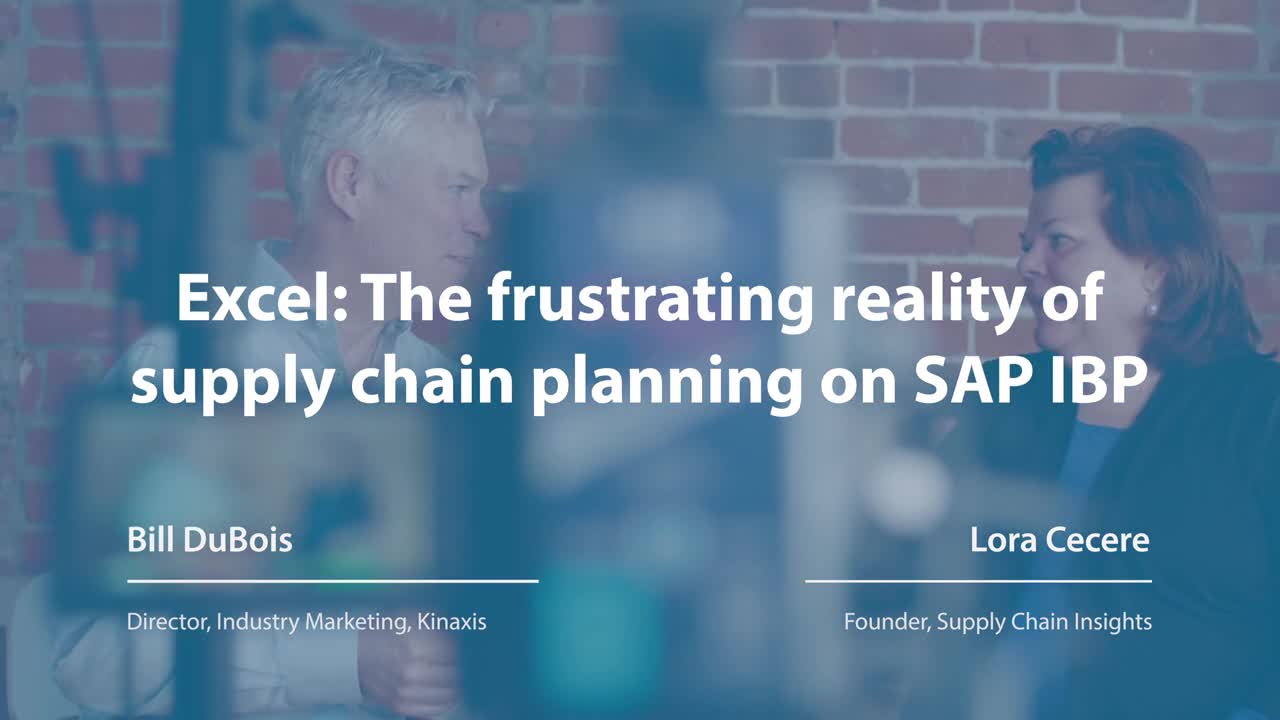I'll be honest, I'm not much of a soccer fan. But, watching the 2019 FIFA Women’s World Cup was both exciting and eye opening. These athletes are at the top of their game and embody excellence in their sport. It’s clear the team invested a lot of time, money, heart and soul to integrate so well, anticipate each other’s actions and achieve that level of performance. This got me thinking about supply chain excellence and raised the question, “How do you achieve excellence when you’re not always working as one team, on one plan?”
Supply chain planning is a team sport
I realize some of you will disagree, and will point out instances where supply chain planning is an integral, connected part of your business. We congratulate businesses that have reached the equivalent of a World Cup soccer performance, but we think, based on conversations at businesses across many industries, that there are many more “little kid soccer team” equivalents. This is a scenario where everyone knows they need to score on the net and run after the ball in an attempt to get control. But there is little structured coordination and while there is coaching available, the players aren’t developmentally mature enough to process the instruction or communicate with each other to help guide their efforts. In fact, it’s a bit of a free for all. This unstructured, every man for himself approach to supply chain planning and kids soccer, has indisputable drawbacks. Without the ability to understand what all of your teammates (aka work colleagues) are doing within your organization, there are bound to be mistakes. For example, forecast numbers fail to meet production output, and profit gain erodes due to expenses such as expediting shipments, holding costs or obsolete inventory. Missed opportunities also arise when commitments from suppliers aren’t clear and schedules get delayed. Then come the referees (aka government entities), who can impose penalties that significantly hamstring your ability to play.
Elevating your supply chain planning game
Fear not however, as not all is lost. Just as the most disjointed youth soccer team can grow and evolve over time to become champions by investing in the right training and equipment, so can a company featuring a low maturity supply chain transform itself into a world class performer. Here are some tips to help elevate your supply chain game.
- There should be rules. To be more precise, a common definition of what supply chain excellence is will facilitate the plan to get there. The set of rules come from identifying what a happy customer expects and then working backwards to determine the capabilities and processes needed to provide that service. Once the plan, or the “plays” have been figured out, execute them. Follow the rules and the game plan to get the result you desire.
- Reward the right things –Lora Cecere, in the webinar Why consider best-of-breed IBP and S&OP solutions for SAP environments, states that in our current supply chain environment reactivity is rewarded. This sends the wrong message to the team about the priority of long term goals. Planning is about what is important. Reactivity is about what is urgent. This translates to a lack of importance on the efforts of the teammate that shows up every day, works hard, is reliable and can be counted on to keep pushing the team forward. In this scenario the MVP is the person that pulls a win out of the jaws of defeat. Awarding special recognition for heroic efforts (heroics that shouldn’t be necessary if the job was done right in the first place) overshadows the important foundational work that the team is doing to get the rules right. Don’t reward the reactive. Create, train and reward a team that plays at a level that doesn’t require the heroic, last minute effort.
- Evolve –When you first form a team, you make an educated guess as to the players you think you’ll need. Often, as your team matures, it becomes clear that there are players and skills missing that your team sorely needs to achieve a higher level of excellence. When that is the case, the best choice to make is to recruit and integrate players that have the talent and capabilities you lack to round out your squad. Because, let’s face it, you can’t win if you don’t have the best available players, or software. In supply chain software, sometimes the technology investment that was made when your operations were less complex aren’t enough to get the job done today. As Lora Cecere states in the video below, it’s often that the ERP system of record isn’t enough to get the job done. Which means it’s time to trade up for a specialized, best of breed solution that will make your operation world class. After all, there is no harm in recognizing that the team you started with isn’t the team that’s going to win you a championship. But there is harm when you refuse to consider that the team, and your technology, needs to evolve.
By the time the next World Cup rolls around you could be in a very different place with your supply chain. But it will take the right team, the right training, the right equipment and the right incentives to make it possible. With practice, the courage to try and the desire to win, anything is possible.
Watch: Tips on how to eliminate planner frustration
Bill Dubois, Industry Marketing at Kinaxis recently sat down with Lora Cecere, Founder of Supply Chain Insights to find out what it takes to eliminate Excel spreadsheets from planning in your SAP environment, and to discover her insights into how you can eliminate planner frustration and elevate the planning experience. 





Leave a Reply